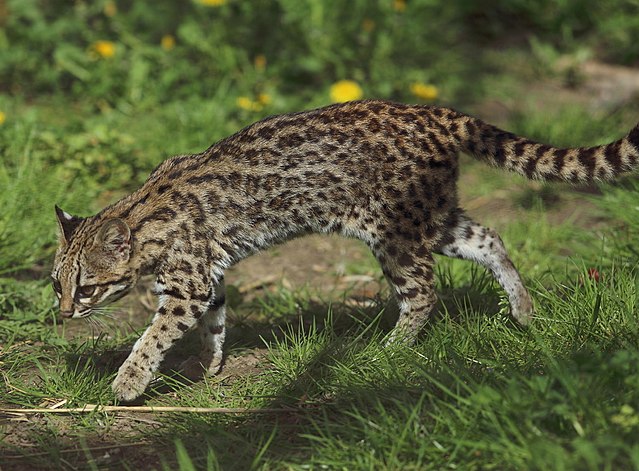We just learned about the Geoffroy's Cat.
Another type of wild cat is the Oncilla, also called the northern tiger cat, little spotted cat, and tigrillo.
These are small spotted cats who live in South America.
They are like the margay and ocelot, but smaller.
Oncillas grow to be about 2 feet long with a 16 inch tail, and they weigh about 6 pounds.
Their fur is brown with rosette spots on their body.
One of the only differences between the oncilla and the ocelot is that the Oncilla has a smaller mouth and fewer teeth.
Just like some of the other South American small cats, the Oncilla is a great climber and mostly stays awake at night to hunt.

(from: wikipedia - oncilla)
Kid Facts - Blast from the past: White Spotted Jellyfish





